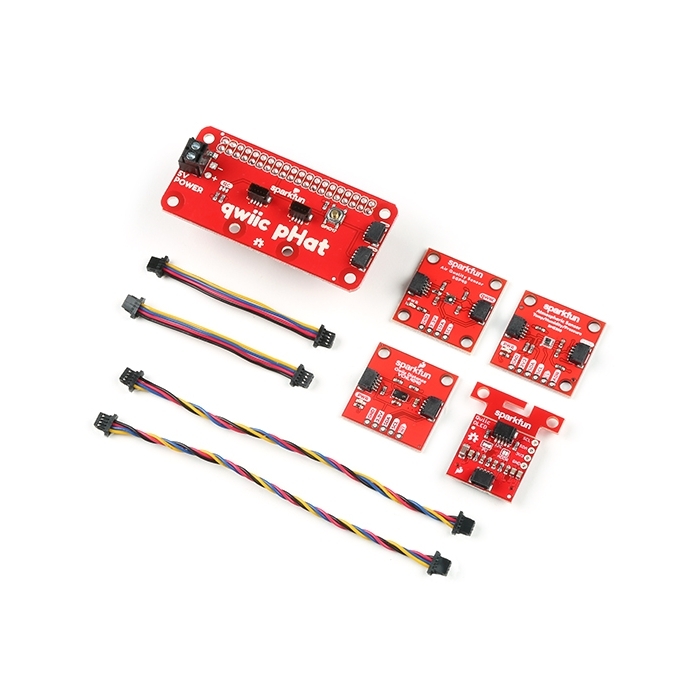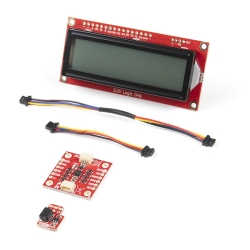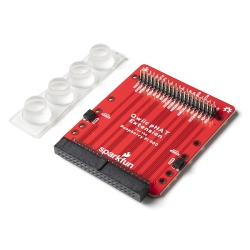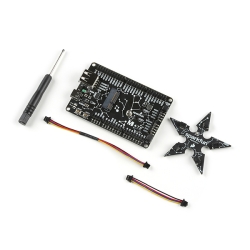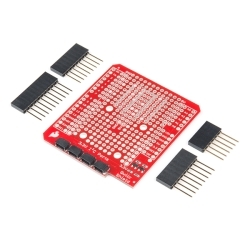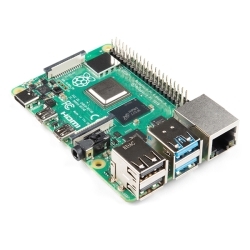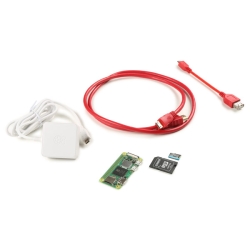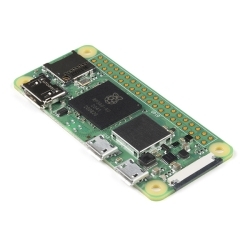SparkFun Qwiic Starter Kit for Raspberry Pi
The SparkFun Qwiic Kit for Raspberry Pi includes a shield with headers, three Qwiic-enabled breakout boards, and four cables to help make I2C easier!
Product Overview
Ready to get started with Raspberry Pi and Qwiic? The SparkFun Qwiic Starter Kit for Raspberry Pi includes the SparkFun Qwiic pHAT v2.0 for Raspberry Pi, which adds four Qwiic connectors to your Pi. It also includes four Qwiic-enabled boards: SparkFun VCNL4040 Proximity Sensor Breakout, SparkFun Micro OLED Breakout, SparkFun BME280 Atmospheric Sensor Breakout, and SparkFun SGP40 Air Quality Sensor. We have also included plenty of Qwiic Cables to connect everything together!
Take sensor readings from each Qwiic-enabled board using Python to measure proximity, ambient light, barometric pressure, humidity, temperature, and VOC Index. Then output the data through the Micro OLED display or a monitor using the serial terminal. Better yet, make an Internet of Things (IoT) project by displaying the sensor data on a custom dashboard using Cayenne!
The Qwiic system makes I2C on your Raspberry Pi a breeze. All you need is a Raspberry Pi with a 2x20 GPIO header to plug the HAT into. This kit can also be used with the NVIDIA Jetson Nano Developer Kit and Google Coral Development Board, since they utilize the same 2x20 GPIO header! Make sure to check the Includes Tab to see everything that comes in the box!
The SparkFun Qwiic Connect System is an ecosystem of I2C sensors, actuators, shields and cables that make prototyping faster and less prone to error. All Qwiic-enabled boards use a common 1mm pitch, 4-pin JST connector. This reduces the amount of required PCB space, and polarized connections mean you can’t hook it up wrong.
Features & Specs
Documentation
- Qwiic Kit for Raspberry Pi V2 Hookup Guide
- Supplemental Hookup Guides
- SparkFun Qwiic pHAT for Raspberry Pi Hookup Guide
- Qwiic Proximity Sensor Hookup Guide
- Qwiic Micro OLED Breakout Hookup Guide
- Qwiic Atmospheric Sensor (BME280) Hookup Guide
- SparkFun Air Quality Sensor - SGP40 (Qwiic)
- GitHub
- Python Modules (i.e. Libraries)
- Qwiic_I2C_Py
- Qwiic_Proximity_Py
- Qwiic_Micro_OLED_Py
- Qwiic_BME280_Py
- Qwiic_SGP40_Py
- Qwiic_Py
- Python Demo Code
- Qwiic Info Page
- Raspberry Pi Resource Page
Customer Reviews

Stock and Customer Discounts
Available Discounts
- $58.43 | 10+ units
- $52.28 | 100+ units

